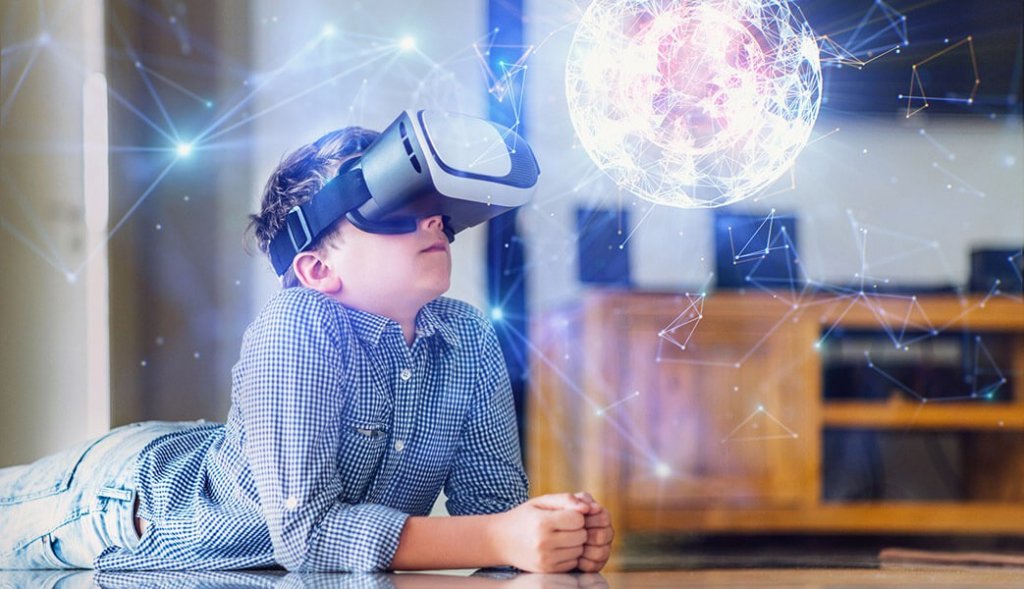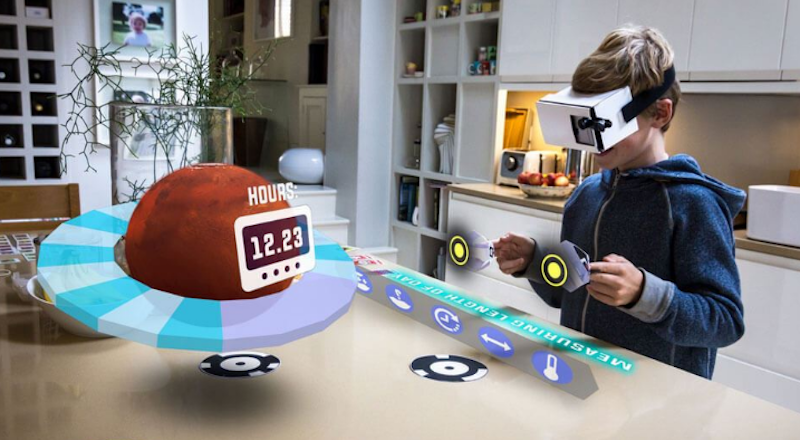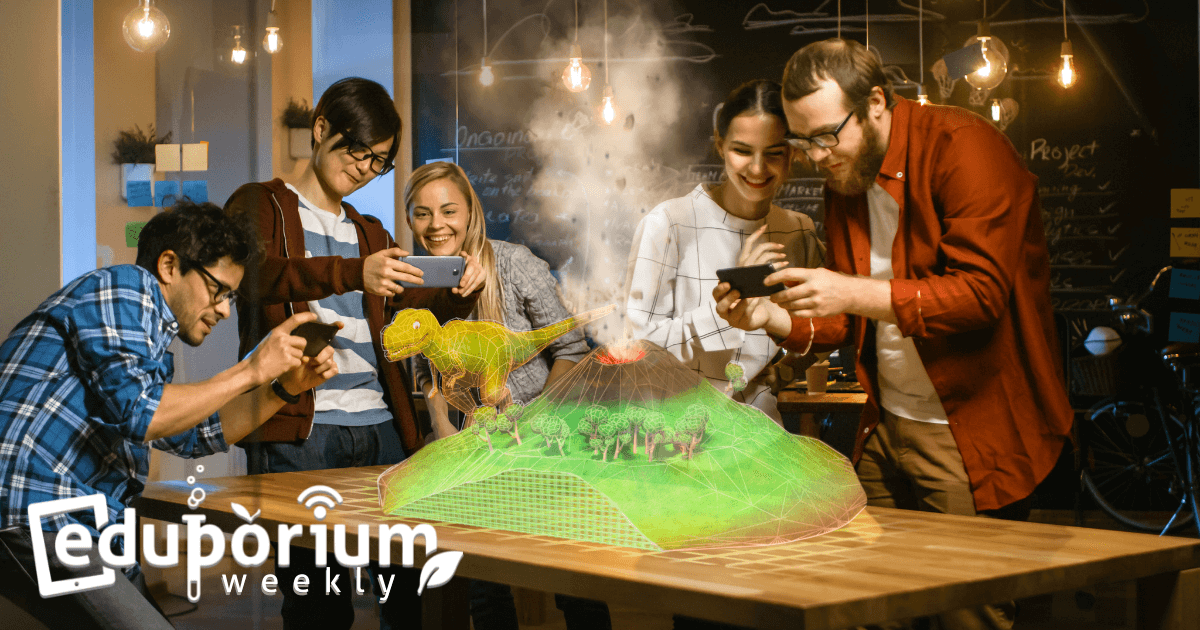For true educational technology fans at the school or district level, you might hear about new technologies all the time. In recent years especially, mixed reality is one that has emerged in this discussion—mainly with virtual and augmented reality and potentially also the metaverse in education. Though these technologies may have initially been for entertainment or gaming, it didn’t take long to realize that they could also impact education—especially in more effectively engaging and exciting students. So, this week, let's explore a few different forms of immersive technology and how students can use them in learning.
Immersive Technology and its Impact
As immersive technologies continue to impact our day-to-day lives, one of the most significant areas for this impact is education. Some might also argue that it’s also the most surprising industry that AR and VR have entered. Part of it is because the technology is affordable, scalable, and relevant to all contemporary learning. Another factor is that automation is replacing so many jobs in our economy but it's also creating new opportunities. Since technology helps create many new jobs, some people can make a career within these niche areas—including mixed reality. Essentially, there’s a decent chance that MR could weave its way into a lot of the industries we all know.
How mixed reality impacts student growth.
Arguably, among the best things students can do to prepare for the future is learning how to want to learn. The world will continue to evolve and finding new ways to learn is going to be key. This includes learning in new mediums, with new technologies, and using them to explore their learning in new ways. If students are familiar with different technologies, including MR tools, they'll all be better equipped for various challenges later on. These types of technologies—along with others—also help students develop more relevant skills. They're also popular among students, helping to keep them engaged and reinforce excitement for learning. Beyond that, they can help keep them in school and view STEM subjects, in particular, as more accessible.
Using both AR and VR in the classroom.
Starting with augmented reality in education, this technology is making an impact in many ways. It’s fairly easy for teachers to integrate, especially since students can use low-end AR tools with mobile phones and still experience the same in-depth learning as with the more involved tools. As students learn about certain topics (in classrooms or on field trips), AR technology helps augment their experiences with real-time facts and tidbits to reinforce topics educators discuss. VR, on the other hand, offers additional benefits, helping students better recall information and concepts and develop empathy for people in their lives and around the world. Neither AR nor VR is superior as each offers unique benefits, but students also don’t need both for relevant learning.
Mixed Reality Applications to Watch For
Augmented reality and virtual reality each have their unique possibilities, especially as newer developments emerge. Collectively, they comprise the mixed reality world, indicating that they can both help educators as they create different immersive experiences. These experiences are all very much educational and school leaders are noticing this potential for innovation. AR and VR help students learn in all-new ways and they're often effective for students who have certain learning styles. We do also fully acknowledge, however, that immersive technologies might not be for everybody and advise educators to first determine if each student is physically okay with utilizing these tools. Some might not be because they could cause motion sickness, for example. Once given the green light, however, teachers could create some thrilling learning experiences using different strategies within different subjects.
Mixed reality and student mastery.
Besides education, mixed reality is valuable across various industries, like entertainment, travel, healthcare, and more. Of course, we’ll be focusing on its educational applications, which are still plenty extensive. One of its most useful benefits in education is for students to demonstrate what they’ve learned. When students can demonstrate mastery of certain concepts, this greatly helps educators gauge if they understand all the key information. While they're learning with immersive technology tools—whether it’s VR or AR—students can truly visualize what teachers are discussing whether that's the human body in a science class, ancient civilizations in a history class, or any other thousands of topics.
The power of mixed reality tools.
Particularly with virtual reality, students can explore 360-degree environments that they would likely not be able to visit. The VR technology that’s available in platforms like the Oculus Quest and VR Expeditions 2.0 system allows kids to strap on a headset and not only look forward but also up, down, left, and right, which opens up entirely new vantage points. The power of mixed reality helps them see these images and makes them feel like they’ve legitimately been transported there. Now, the added element of immersion can come more into play by helping engage students even further. Actually feeling like they're in that place provides brand-new perspectives for children whether they're exploring the depths of the ocean, some beautiful landscapes, or the world’s most thrilling landmarks.

The Future of AR and VR in Education
One common argument that proponents of mixed reality technology offer is that it helps immerse students in learning, creating new types of experiences and leading to enhanced engagement. These tools can help students of all ages—from elementary school into grad school—and serve many different purposes. Mixed reality technology has already impacted the everyday lives of a lot of people with its presence in our mobile phones and other smart devices, making its trickle into classrooms seemingly inevitable. There is a market for immersive technologies in education and, as we said, it's popular at all levels of learning. Plus, students of different ages experience different benefits from AR and VR and, as long as it can remain affordable and user-friendly, it likely won't slow down in educational adoption.
Mixed reality examples in learning.
As teachers use these tools, the evolution of immersive technologies has helped support their instruction and meet student needs. There's also been a huge shift recently with using mixed reality tools for teaching more than just academic content. Educators have discovered that they could use media like VR and AR to actually teach students specific skills. As you’d expect, these include some basic skills in early education and some specific technical skills for college students. AR and VR can also transport students to anywhere and create interactive exploration—two unconventional but effective methods of learning. It can even help students build decision-making skills simply by offering a new approach to age-old learning experiences.
MR applications in the professional world.
While AR and VR can help educators teach both content and skills, it could also help employees learn how to manage certain situations in the professional world. So, besides helping students learn about these new media and digest content in new ways, experiences with immersive technologies in the classroom can also help them prepare for potentially using it in their professional lives. Some of those applications of MR in the professional world include various training exercises, sales simulations, and product demonstrations. It can also help in a slew of industries, including in highly complex military training exercises or flight simulations. As AR and VR continue evolving, students may realize they can use these tools to learn equally important concepts. And, this shift could continue impacting education at various levels.
Breathing New Life into K-12 Classrooms with MR
We’re not saying that mixed reality in education is for everybody, but it does certainly help some students. We’ve already discussed how, in some certain situations, both VR and AR can help students retain content better, which, of course, leads to better grades, development, confidence, and overall achievement. Mixed reality technologies have definitely caught the eyes of innovative educators because of the large amount of potential they show. Though they are still super young overall, they can help students explore entirely new areas without leaving the classroom. But, rather than simply providing students with new toys, education leaders must invest in experiences that actually help them learn.
Mixed reality applications in learning.
While there's a lot of excitement surrounding mixed reality, there are a lot of questions, too. First, educators need to realize that this is not just another flavor of the week and plan for how it might enhance learning. It certainly can help with that as long as teachers integrate it effectively. When they are intentional with these tools, they offer more than just new types of field trips for kids. Putting them in the position to actually see, hear, and interact with educational content helps educators energize their instruction while using MR tools. Especially when the educational VR content involves topics they’ve already discussed, student retention levels can shoot up. This goes in line with not completely replacing traditional instruction, but using mixed realities to supplement it.
Increasing efficiency and ownership in the classroom.
VR can change how students’ brains function, help them see content come alive, or immerse themselves in unique problem-solving situations. They can also study the information technology used in creating VR content to learn about how it’s built. Plus, it can also help students with certain developmental challenges, like dyslexia, for example. Mixed reality can help them learn a lot more without exhausting as much effort. Finally, MR tools can help put content creation in the hands of students. They can use various computer programs to design virtual objects and, maybe with time, there will be classroom tools for programming both virtual and augmented reality content. Ultimately, when students use VR, it can encourage them to take control of learning while boosting their excitement and achievement.

Examples of Using VR in Education
When it comes to the future of virtual reality, gaming remains prominent but education isn't far behind. At the moment, there are four important areas within education in which VR is making a significant splash. For example, VR can help bring students from one side of the globe together with students on the other side of the globe as they learn about something meaningful from either long ago or present day in their area of the world. VR has also evolved from something that one person would use at a time into much more of a social experience, including in K-12 classrooms. When using VR equipment—depending on how advanced it is—students can feel like they’re holding objects, walking around in virtual environments, or visiting new places as the technology has become much more conducive to authentic learning.
VR in education making an impact.
Some key areas of VR's impact on education are in tutoring, STEM development, field trips, and CTE. It can also foster social-emotional connections on the periphery by helping students engage with the content more deeply and find new words to express their feelings. One reason that VR works so effectively today is because the technology has advanced so quickly, allowing it to help support high-quality learning. It's also evolved into more of a social experience for students and, since becoming more social, its value has grown for students or teachers. Also, across Higher Ed, there are sometimes rumblings about replacing traditional online classes with virtual reality learning experiences. This is because VR learning often offers students more in terms of the learning experience, leads to greater retention, and helps them actively participate.
Virtual learning experiences, simulations, and more.
For example, educators can use VR to tutor students in specific areas while creating a more personalized experience for them. And, as for virtual field trips, students often learn important things as teachers lead class-wide immersive experiences. VR can also enable educators to create virtual lab environments so all students can see things from close up or even practice carrying out specific tasks to prepare for the future. As VR continues evolving, educational content is also improving as evidenced by the hundreds of amazing Expeditions that are part of the RobotLAB VR solutions. And, maybe some day, there will be VR headsets in every classroom. Just a few years ago, it may have seemed unlikely for all students to have laptops but look where we are now.
For the latest EdTech, STEM, and 21st century education news, follow us on Twitter and Instagram. Like us on Facebook, too, or sign up for our newsletter for our latest product announcements and offerings. If you have an idea for an Eduporium Weekly theme, send us a message on social media or comment below.



